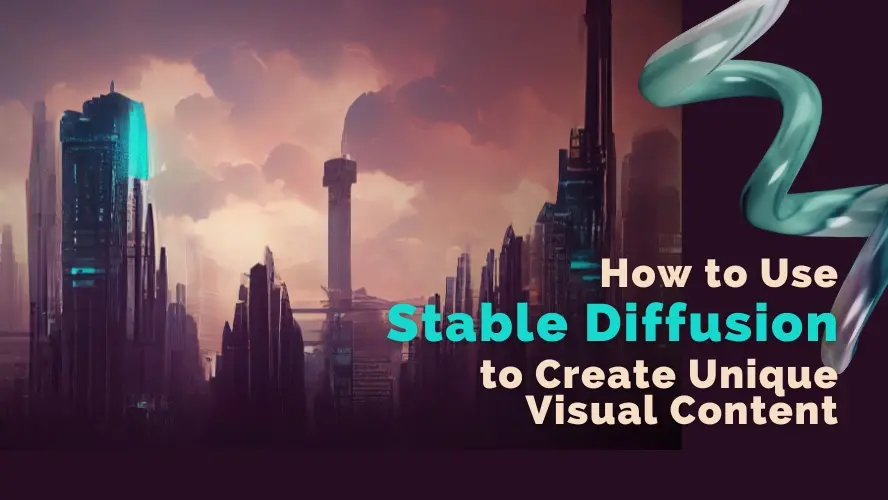Stable Diffusion has emerged as a game-changer in the world of visual content creation. This powerful AI model transcends the boundaries of traditional design tools, allowing users to transform textual descriptions into stunning and unique images. Whether you're a seasoned artist, a budding entrepreneur, or simply someone with a vivid imagination, Stable Diffusion empowers you to bring your ideas to life in a captivating visual format.
This comprehensive guide delves into the exciting world of Stable Diffusion, equipping you with the knowledge and techniques to generate exceptional visual content. We'll explore the core functionalities of the model, delve into the process of crafting effective prompts, and uncover best practices to maximize your creative output.
Uncovering Stable Diffusion: An Inside Look
Stable Diffusion belongs to a class of AI models known as latent diffusion models. These models are trained on massive datasets of text-image pairs, enabling them to grasp the intricate relationship between words and their visual representations. When presented with a text prompt, Stable Diffusion employs a sophisticated algorithm to iteratively refine a starting point of random noise, gradually coaxing it into an image that aligns with the textual description.
The magic lies in the model's ability to not only generate realistic visuals but also capture the essence and style conveyed through the prompt. This allows for remarkable creative flexibility – you can specify artistic styles like Van Gogh or anime, evoke specific moods like "dreamlike" or "surreal," or even incorporate fantastical elements like "a dragon flying over a cyberpunk cityscape."
Crafting the Perfect Prompt for Stable Diffusion
The cornerstone of successful Stable Diffusion usage lies in crafting an effective text prompt. This prompt serves as the blueprint, guiding the AI toward your desired visual outcome. Here are some key elements to consider when constructing a powerful prompt:
Clarity and Specificity: Be as precise as possible with your descriptions. Instead of a generic "cat," use "a fluffy Persian cat basking in the sunlight on a windowsill." The more details you provide, the better Stable Diffusion can understand your vision.
Style and Mood: Incorporate keywords that define the desired artistic style or evoke a specific mood. Want a photorealistic image? Mention "photorealistic." Craving a vintage vibe? Add "vintage photograph."
Composition and Details: Describe the desired composition of the image. Is it a close-up portrait or a vast landscape? Include details about objects, lighting, and overall atmosphere.
Reference Images (Optional): While Stable Diffusion excels at generating visuals based on text alone, you can also provide reference images for even greater control. This can be particularly helpful when aiming for specific details or replicating a particular style.
Beyond the Basics: Advanced Prompt Techniques
As you gain experience, explore advanced prompt techniques to further refine your creations:
Negative Prompting: Indicate elements you explicitly don't want in the image. For example, "a cat, not a dog."
Combining Concepts: Merge seemingly disparate ideas, like "a steampunk robot playing chess in a forest."
Iteration and Refinement: Don't settle for the first result. Use the generated image as a starting point for further refinement with additional prompts.
Step-by-Step Guide to Using Stable Diffusion
Now that you're equipped with the fundamentals, let's embark on the creative journey of using Stable Diffusion:
Choose Your Platform: Stable Diffusion is available through various online interfaces and downloadable software packages. Explore options like Dream by WOMBO or RunwayML to find a platform that suits your needs and technical expertise.
Craft Your Prompt: Using the principles outlined above, meticulously craft a text prompt that encapsulates your desired image. Don't be afraid to experiment and iterate on your prompt for optimal results.
Generate and Refine: Once satisfied with your prompt, initiate the image generation process. Stable Diffusion will generate a set of images based on your prompt. Carefully review the outputs and select the image closest to your vision. You can then use this image as a starting point for further refinement with additional prompts.
Fine-Tuning and Control: Many platforms offer additional settings for fine-tuning the generation process. These may include adjusting the image size, the number of iterations, or the level of randomness. Experiment with these settings to achieve the desired level of detail and control.
Iteration is Key: Remember, Stable Diffusion is an iterative process. Don't be discouraged if the initial results don't perfectly match your vision. Refine your prompts, experiment with different settings, and keep generating until you achieve the desired outcome.
Exploring the Applications of Stable Diffusion
The potential applications of Stable Diffusion extend far beyond mere image creation. Here are some exciting ways this technology is revolutionizing various fields:
Concept Art and Design:
Concept Exploration: Generate a variety of visual concepts for flyers, posters, or social media graphics in minutes. Imagine feeding Stable Diffusion a prompt like "a vibrant infographic about the benefits of recycling" and exploring numerous design ideas before settling on the perfect one.
Brainstorming Ideas: Make an array of graphic ideas to kickstart the creative process for everything from product design (think furniture with a specific aesthetic) to video game environments (imagine landscapes for different planets).
Rapid Prototyping: Quickly explore different design iterations by feeding Stable Diffusion text descriptions of your ideas. This can be particularly useful for product designers who can test out various color schemes or functionalities visually before committing to physical prototypes.
Marketing and Advertising:
Creating Eye-Catching Visuals: Craft unique and captivating visuals for social media campaigns, presentations, or website banners, tailored to resonate with your target audience. Imagine generating visuals that perfectly capture the essence of your brand or product.
Personalized Marketing Content: Generate visuals that cater to specific demographics or user preferences. This could involve creating targeted social media marketing or ads with visuals that differ based on age group or location.
Education and Science:
Visualizing Complex Concepts: Bring scientific data or abstract ideas to life with clear and engaging visuals, enhancing learning and comprehension. Imagine generating diagrams that explain complex biological processes or historical events in a visually captivating way.
Generating Educational Materials: Create custom illustrations or diagrams to supplement textbooks or presentations. Teachers can use Stable Diffusion to generate visuals that cater to different learning styles or age groups.
Entertainment and Storytelling:
Concept Art for Films and Games: Develop initial visual concepts for characters, environments, or storyboards. This can be a huge time saver for artists and concept designers in the early stages of production.
Comic Book and Manga Creation: Generate panels or character designs to accelerate the artistic workflow. Comic book creators can use Stable Diffusion to experiment with different visual styles or quickly generate backgrounds for their stories.
Personal Projects and Hobbies:
Illustrating Your Ideas: Bring your stories, poems, or song lyrics to life with captivating visuals. Imagine generating an image that perfectly captures the mood and atmosphere of your creative piece.
Exploring Artistic Styles: Experiment with different artistic movements or historical periods by using them as prompts. This can be a fun way to learn about different art styles or create unique pieces inspired by your favorites.
Accessibility and Innovation:
Creating Visuals for People with Visual Impairments: Generate image descriptions to enhance the accessibility of digital content. This can be incredibly helpful for people who are blind or visually impaired, allowing them to better understand the content of websites or social media posts.
Prototyping New Products and Services: Visualize never-before-seen ideas to spark innovation and accelerate product development. Imagine generating prototypes of new technological devices or services to explore their feasibility before investing significant resources.
Stable Diffusion Recommended Platforms for Visual Content Creation
Stable Diffusion offers exciting capabilities for visual content creation, and here are some recommended platforms to get you started:
1. Dream by WOMBO
Dream by WOMBO prioritizes accessibility, providing users with a wide range of presets and templates to jumpstart their creative process. This is a great option if you're new to Stable Diffusion and want to explore different visual styles without getting overwhelmed by complex prompts.
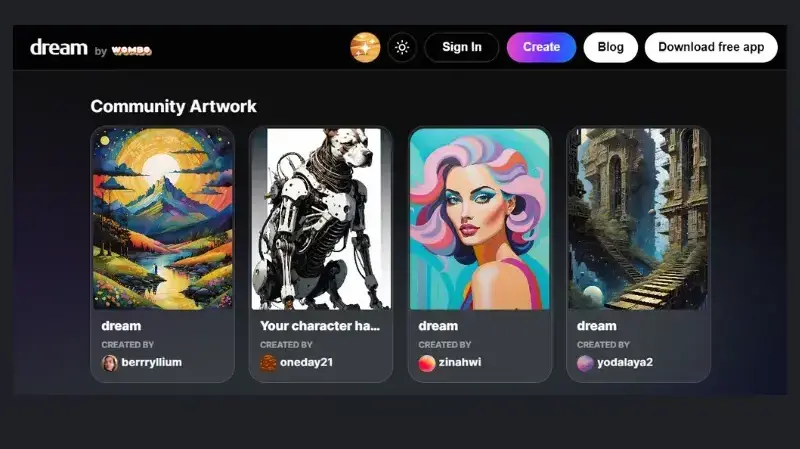
Features:
User-friendly interface:- Dream by WOMBO offers a user-friendly interface that makes it easy for beginners to experiment with Stable Diffusion.
Freemium model: Dream by WOMBO has a freemium model, allowing you to generate a limited number of images for free. Paid plans offer higher generation limits and additional features.
2. RunwayML
RunwayML caters to a more experienced audience, offering a high degree of control and customization over the generation process.

Features:
Advanced features: RunwayML boasts advanced features like inpainting, allowing you to edit specific parts of a generated image, and fine-tuning, enabling you to achieve more precise results with your prompts.
Requires some technical knowledge: While RunwayML offers a variety of tutorials and resources, it requires a slightly steeper learning curve compared to Dream by WOMBO.
3. Nightcafe Creator
Nightcafe Creator fosters a vibrant community of Stable Diffusion users. You can browse creations by other users and get inspiration for your own prompts.
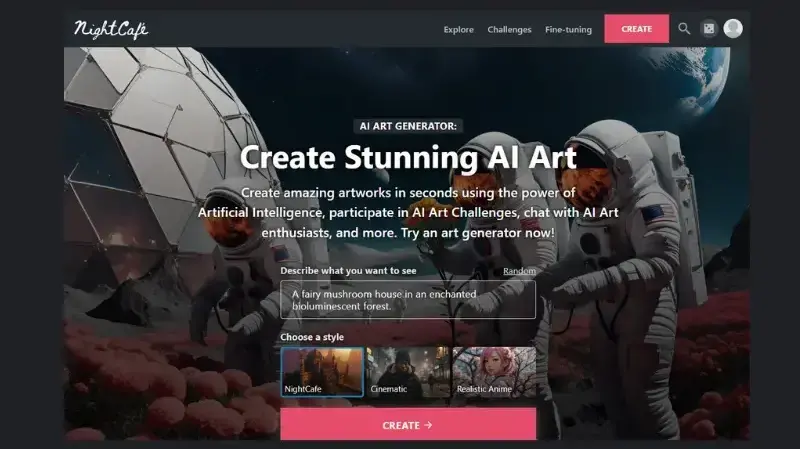
Features:
Emphasis on artistic exploration: Nightcafe Creator is geared towards artistic exploration, offering various filters and effects to add a unique touch to your generated images.
Subscription-based model: Nightcafe Creator operates on a subscription-based model, providing access to a set number of generations per month.
4. Leonardo
Leonardo.ai goes beyond the standard Stable Diffusion model. They offer a variety of specialized models trained for specific artistic styles, like "Absolute Reality" for photorealism or "3D Animation Style" for concept art.
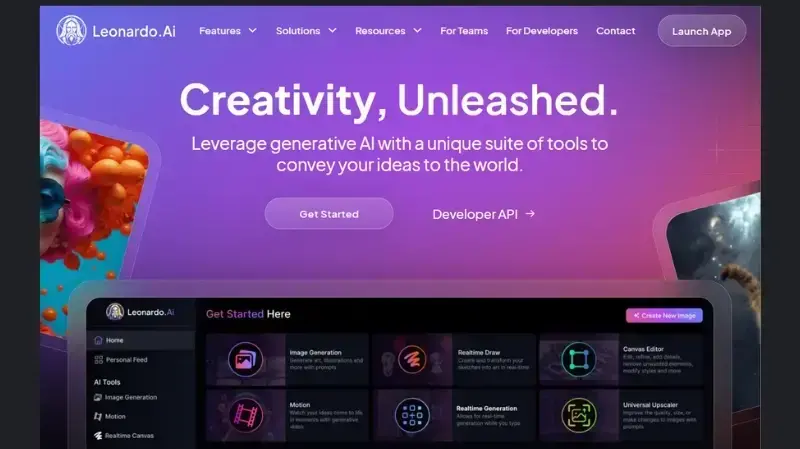
Features:
Model Fine-Tuning (Beta): (This feature is currently in Beta) Leonardo.ai is exploring functionalities that allow you to fine-tune Stable Diffusion models based on your preferences or brand aesthetics. This opens doors for even more personalized image generation.
Community and Support: Leonardo.ai fosters a vibrant community of creators through forums and social media channels. This allows users to share prompts, techniques, and get inspiration from each other's work.
5. Civitai
Civitai.com curates a vast collection of Stable Diffusion models, also known as "checkpoints." These models can be downloaded and used with compatible software to generate images. This allows users to explore different variations of Stable Diffusion, some trained for specific artistic styles or functionalities.
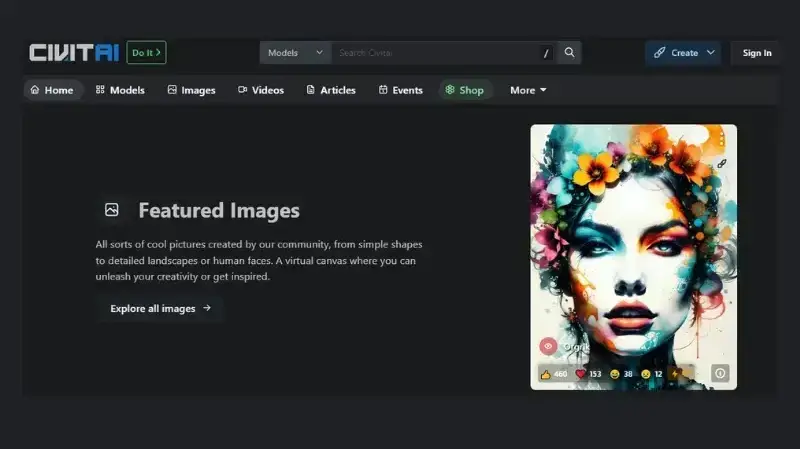
Features:
Tutorials and Guides: Civitai.com offers a wealth of information on Stable Diffusion, including tutorials and guides that teach users how to install, use, and get the most out of the technology. This makes it a valuable resource for beginners and experienced users alike.
Integration with Different Platforms: Civitai.com provides resources and information on using Stable Diffusion with various software platforms, including popular options like Dream by WOMBO. This broadens the accessibility of Stable Diffusion for users who prefer specific creative interfaces.
Choosing the Right Platform
The best platform for you depends on your experience level and specific needs. Here's a quick breakdown to help you decide:
For Beginners: Dream by WOMBO and Leonardo with their user-friendly interface and emphasis on accessibility is a great starting point.
For Experienced Users: RunwayML offers the most control and customization for those comfortable with a more technical environment.
For Artistic Exploration: Nightcafe Creator and Civitai provide the community-driven platform with an emphasis on artistic exploration through filters and effects.
Conclusion
The realm of creating visual content is given a boost in efficiency and innovation by Stable Diffusion. Whether you're an experienced designer, an aspiring business owner, or just someone with a creative mind, Stable Diffusion gives you the ability to connect the dots between your concepts and eye-catching illustrations.
Seize the opportunity to create original thoughts, experiment with different aesthetic approaches, and optimize your design process by utilizing text-to-image production and image-to-image editing.
As Stable Diffusion technology matures, we can expect even more exciting advancements, pushing the boundaries of what's possible in the realm of visual storytelling. So, unleash your creativity, experiment with prompts and settings, and dive into the world of Stable Diffusion to bring your unique visual concepts to life!
Frequently Asked Questions
What content management sytems use PHP?
All of the most popular content management systems are compatible with PHP including, WordPress, Joomla, Drupal, and Magento
Is there more than one Content Management System?
Absolutely! There are hundreds of CMSs available, and they all work in different ways.
How do businesses ensure authenticity in User-Generated Content?
Authenticity in UGC is maintained by allowing users to share genuine experiences and opinions. Businesses should avoid heavy-handed editing, filtering, or scripting, ensuring that the content reflects the unfiltered voice of the community.
Can User-Generated Content be measured for its impact?
Yes, businesses can measure the impact of UGC through various metrics such as engagement rates, reach, sentiment analysis, and conversion rates. Monitoring these metrics provides insights into the effectiveness of UGC strategies.

Audee Mirza is a graphic designer and WordPress developer at audeemirza.com who resides in Surabaya, Indonesia. She's also the author of Graphic Identity Blog, a professional logo designer, and often creates vector illustrations for clients and marketplaces. She enjoys good typography design and all kinds of animation.
View all posts by Audee Mirza















